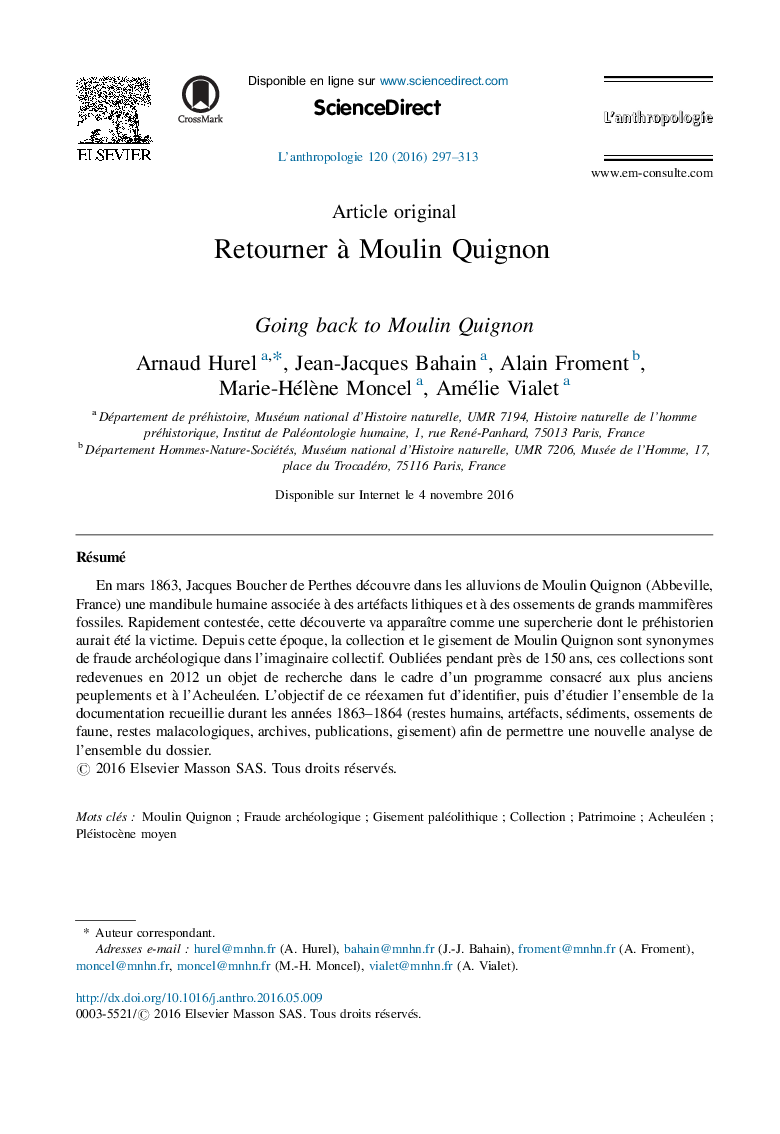| Article ID | Journal | Published Year | Pages | File Type |
|---|---|---|---|---|
| 5111864 | L'Anthropologie | 2016 | 17 Pages |
Abstract
In March 1863, Jacques Boucher de Perthes found in the alluvia of Moulin Quignon (Abbeville, France) a human jaw in association with lithic artifacts and fossil bones of mammals. Quickly challenged, this discovery will appear as a fraud whose prehistorian was the victim. Since that time, the collection and the Moulin Quignon site are synonymous with an archaeological forgery. Forgotten for almost 150 years, these collections became in 2012 a research topic in the context of a program devoted to oldest settlements and Acheulean. The objective was to identify and study the whole 1863-1864 documentation set (human remains, artifacts, sediments, fauna bones, malacological remains, archives, papers, site) to allow further analysis of the whole subject.
Keywords
Related Topics
Social Sciences and Humanities
Arts and Humanities
History
Authors
Arnaud Hurel, Jean-Jacques Bahain, Alain Froment, Marie-Hélène Moncel, Amélie Vialet,
